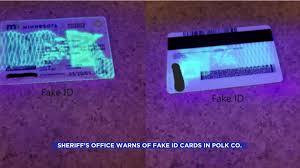2024 handicap placard
Handicap Placard: Parking Rules for Disabled Explained (2024)
You cannot use a disabled parking placard on another vehicle unless you are the registered owner of the disabled parking placard and are driving or being transported by that vehicle. If you are transporting a disabled person with a valid disabled parking placard, you may use that placard in your vehicle. However, it is illegal to use someone else's disabled parking placard or to allow someone else to use your placard.
Who Qualifies for Handicap Parking Signs?
According to HandicapMD, obtaining a disabled license plate or a disabled sign requires meeting specific criteria that focus on mobility impairments caused by various medical conditions.
These conditions include:
Loss of one or both legs or arms
Inability to use one or both arms or legs.
A technical condition that affects mobility, limiting the use of hands or feet.
Dependence on a mobility aid such as a wheelchair, walking frame or cane.
Documented visual impairment, including partial blindness or low vision.
A variety of medical conditions can affect mobility and qualify an individual for disabled parking privileges. These conditions include:
Severe heart disease resulting in the need to use a wheelchair.
Rheumatoid arthritis and arthritis
Respiratory conditions that require a portable oxygen tank
Chronic conditions such as emphysema, asthma, cystic fibrosis and chronic obstructive pulmonary disease (COPD).
Multiple sclerosis
Parkinson's disease
Visual impairment
Prosthetic limbs (legs, hands or arms)
High sensitivity to sunlight.
Health conditions that require the use of assistive devices
Conditions such as obesity, inflammatory bowel disease and lupus.
It is important to note that final eligibility for disability parking privileges is determined by a medical professional. Consulting with a medical provider is essential to determine eligibility and ensure compliance with relevant regulations. By meeting established criteria and receiving approval from a medical professional, individuals can receive the necessary accommodations to support their mobility needs.
Types of Disability Parking Plaques
According to Divan Medical, the Department of Motor Vehicles (DMV) offers several types of disability parking plaques and license plates to qualifying individuals. These include permanent plates or parking plaques, temporary parking plaques, and travel plaques, each with specific uses.
Permanent disability plates and plaques are designed for individuals with long-term disabilities and are intended to provide long-term accommodations. Temporary plaques, on the other hand, are intended for individuals who need short-term assistance due to a temporary injury, recovery from surgery, or pregnancy. Temporary disability plaques are valid for six months and can be renewed up to six times, with each renewal requiring a new doctor's note.
Travel plaques are designed to provide accommodations for individuals with permanent disabilities who are traveling out of state, ensuring that they can continue to enjoy disability parking privileges while away from home - Divan Medical.
The Department of Motor Vehicles (DMV) is committed to meeting the diverse needs of people with disabilities by providing different types of signs and license plates to promote mobility and accessibility in a variety of situations. Eligible individuals can apply for the appropriate sign or license plate based on their specific circumstances, ensuring that they can easily overcome the challenges they encounter when parking.
Five Facts About Accessible Parking
The striped markings next to a disabled parking space have an important meaning: they indicate that the parking space is reserved specifically for wheelchair-accessible vehicles. These designated parking spaces are wider than regular disabled parking spaces, providing ample space for individuals to safely position ramps and enter and exit their vehicles.
It is very important to understand the difference between parking spaces that are specifically marked for cars and wheelchair-accessible vans. When the sign says "Accessible Van," it means that the parking space is specifically reserved for wheelchair-accessible vehicles. The sign that can identify these van-specific parking spaces is a striped passage on the passenger side that facilitates wheelchair access.
It is important to note that not all disabilities are immediately apparent, and some people do not use wheelchairs but still need accessible parking spaces. These parking spaces are designed to accommodate a variety of disabilities, including but not limited to hearing impairment or recent injury, thereby ensuring that all individuals facing mobility challenges have equitable access to accessible spaces.
Under the Americans with Disabilities Act (ADA), businesses are legally obligated to provide a certain number of accessible parking spaces. The number of accessible parking spaces required depends on the total number of parking spaces in the parking lot. However, the ADA requires that at least one of every six accessible parking spaces be designated for a wheelchair-accessible vehicle.
As wheelchairs continue to evolve and increase in size, the need for additional spaces in parking spaces becomes more apparent. These additional spaces are essential for safe and easy access for wheelchair users, providing ample room to maneuver when using ramps and entering and exiting vehicles.
 Nevada Fake ID
Nevada Fake ID
 fake Alaska ID
fake Alaska ID
 Missouri Fake ID
Missouri Fake ID
 fake Connecticut ID
fake Connecticut ID
